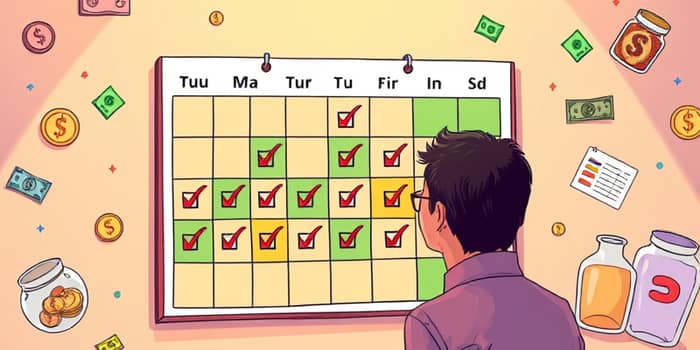
Transforming your personal finance routine begins with a simple yet powerful structure for consistent tracking. By mapping out income, expenses, and goals on a calendar, you gain clarity over every dollar that flows in and out.
Most people associate calendars with meetings and deadlines, but when you apply the same system to money management, you unlock a big-picture overview of income and obligations. A calendar forces you to visualize due dates, paydays, and review sessions in one consolidated view.
With a well-maintained financial calendar, you:
These benefits translate to reduced stress and improved confidence, knowing that nothing slips through the cracks.
Selecting the right calendar format depends on your lifestyle and goals. Below are three popular approaches you can adapt immediately:
Creating an effective calendar requires both planning and personalization. Follow these practical steps to tailor your calendar to your unique situation:
By following these steps, you embed financial check-ins into your routine, making money management feel as natural as any other weekly habit.
Each finance session should cover the following core elements without overwhelming you:
These categories provide a comprehensive snapshot of your financial health and spotlight areas where you can adjust your strategy.
To make calendar-based money check-ins stick, treat them like any other self-care ritual. Just as you schedule exercise or downtime, your finances deserve dedicated attention.
Regular sessions cultivate financial awareness and create a positive feedback loop: seeing progress motivates you to maintain the behavior, which in turn drives further results.
Consider pairing your check-in with a small reward—such as a favorite cup of tea or five minutes of quiet reflection—to reinforce the practice. Over time, these sessions become less of a task and more of a routine that supports your goals.
People who adopt calendar-based money management frequently report significant improvements:
These wins build confidence and reduce the anxiety that often accompanies financial uncertainty.
Implementing a calendar for money check-ins is a transformative step toward financial control. It shifts you from reactive to proactive management, turning stress into strategy.
Start today: pick your format, mark your first check-in, and watch as consistency breeds clarity, confidence, and measurable progress toward every financial goal.
References













